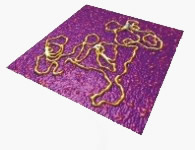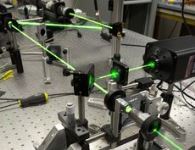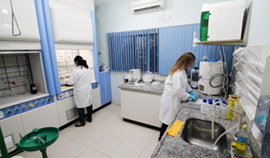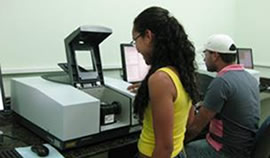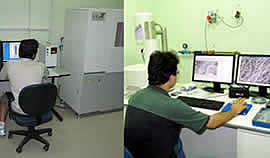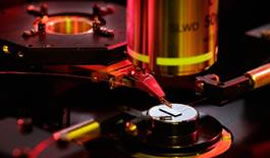-
 Join our team! Become a member of GON.
Join our team! Become a member of GON. -
 Our multi-user laboratories attend to more than 10 research groups of the Federal University of Alagoas.
Our multi-user laboratories attend to more than 10 research groups of the Federal University of Alagoas. -
 We also develop microfabrication processes by direct laser writing.
We also develop microfabrication processes by direct laser writing. -
 Our material characterization labs possess some exclusive equipment in the whole South America. You are welcome to visit our labs and see it for yourself.
Our material characterization labs possess some exclusive equipment in the whole South America. You are welcome to visit our labs and see it for yourself. -
 We use a scanning electron microscope with integrated EDX and an anti-vibration work station to obtain high-resolution surface images.
We use a scanning electron microscope with integrated EDX and an anti-vibration work station to obtain high-resolution surface images. -
 We also develop research activities involving linear and non-linear optical phenomena.
We also develop research activities involving linear and non-linear optical phenomena. -
 Our lab for samples preparation is very well equipped: chemistry lab with two fume hoods.
Our lab for samples preparation is very well equipped: chemistry lab with two fume hoods. -
 Our scanning multiprobe microscope allows the use of different techniques (AFM, SNOM, EFM…) in order to obtain high resolution tridimensional imagery.
Our scanning multiprobe microscope allows the use of different techniques (AFM, SNOM, EFM…) in order to obtain high resolution tridimensional imagery. -
 The optics lab includes the study of the complex light, which corresponds to structuring the amplitude and phase of the coherent light.
The optics lab includes the study of the complex light, which corresponds to structuring the amplitude and phase of the coherent light. -
 Join our team! Be a part of GON.
Join our team! Be a part of GON.
